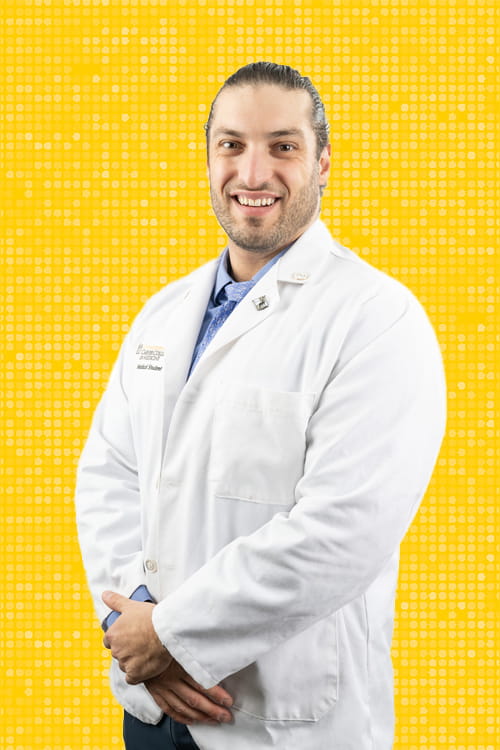
Guillermo Romano Ibarra, MD/PhD student
Correlates cell function to lung health
“Guillermo has overcome and continues to overcome every challenge thrown at him…To me, Guillermo’s tenacity, drive, and research and academic success demonstrate that without question Guillermo has ‘Dared to Discover.’” -David Stoltz, professor
Hometown: Seattle, Washington
Faculty mentor/advisor: David Stoltz, MD, PhD; professor of internal medicine, Carver College of Medicine
What is your degree program and anticipated graduation date? Combined MD/PhD program (Medical Scientist Training Program, MSTP). I complete my PhD this semester and return to clinic for a final graduation of 2025.
Please describe your research: I study how mucus and salt contribute to respiratory health and disease. Cystic fibrosis (CF), for instance, stems from the inability to release chloride through CFTR channels, resulting in thick mucus that gets stuck in the lungs, leading to infections and mucus plugs. I study 1) how this mucus helps move particles that we breath out of our airways and 2) how cells with high levels of CFTR, called ionocytes, respond to inflammation. Normally, these cells are thought to absorb liquid on the airway surface to regulate mucus properties. But during an infection they lose CFTR and can’t absorb liquid. I also noticed that patients with asthma and chronic bronchitis have reduced CFTR on ionocytes. This might contribute to what I call the “runny nose hypothesis”—resulting in lots of mucus covering the cells that protect our airways.
In simple terms, why does this research matter? Understanding how cellular functions are linked to disease is key for developing new drugs and therapies. For example, the understanding that CFTR is misfolded in CF drove the development of CFTR modulators. These “miracle drugs” restore the ability of CFTR to release chloride to the airways and have “functionally” cured people with CF. But not all people with CF respond with the same effect. My research shows that inflammation reduces CFTR on ionocytes but increases CFTR on other cell types. These differences might explain why some CF patients respond better than others, and how therapies for patients with CF might improve the lives of patients with asthma and chronic bronchitis.
How soon after starting at the University of Iowa were you able to participate in research?Immediately! I wanted to work on cystic fibrosis and chose Iowa because of the strong CF research community here.
How has being involved in research made you more successful at the University of Iowa? While in medical school, I was drawn to the areas of medicine that we don’t fully understand yet. Research is what has driven my curiosity and desire to learn. Beyond academia, my research community was immensely supportive after I was hit by a car moving 60 mph while riding my bicycle outside Iowa City. I sustained life-threatening injuries and fractures to my pelvis and spine. My mentors and lab mates supported me and my family throughout my hospital stay and subsequently through the long process of rehabilitation. They facilitated my return to the laboratory so that I might continue my work.
What are your career goals and/or plans after graduation? I hope to become a physician-scientist, which means that I will see patients and run a research laboratory at the same time. Being in clinic is where we can identify clinical needs and shortcomings that we pursue in lab.
Banner location: Downtown—
